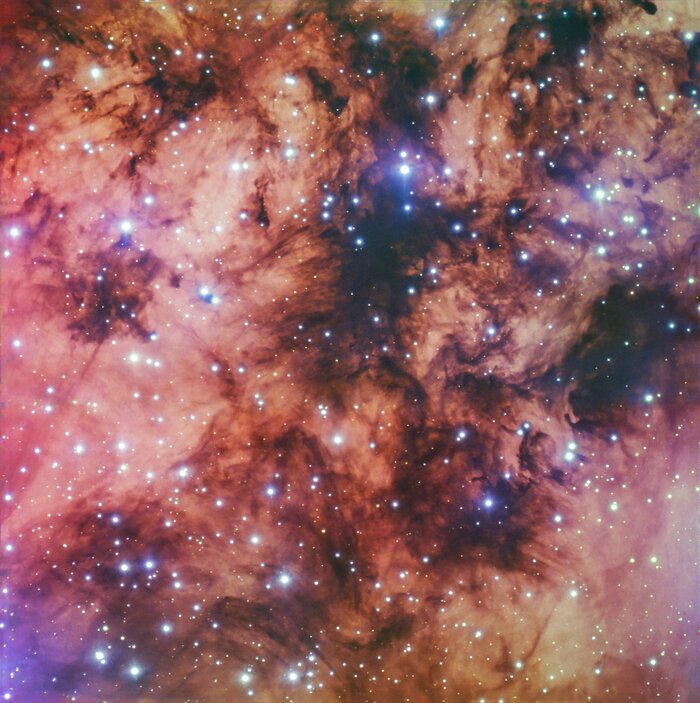A scarlet cosmic sea
In this colorful Picture of the Week we see a portion of the Gum 10 nebula through the eyes of ESO’s Very Large Telescope in Chile. Gum 10 was discovered by the Australian astronomer Colin Stanley Gum, who in 1955 published a catalogue with more than 80 similar diffuse nebulae.
The energetic ultraviolet radiation from the hot blue stars in Gum 10 ionise the gas in the nebula, stripping electrons away from their atoms. When these electrons combine again with the atoms, they emit light at very specific colours or wavelengths. The red shade in this image comes from hydrogen, the most abundant element in the Universe. The dark areas are dense clouds of dust that partially block our view of the objects behind them.
This image, taken with the FORS2 instrument, was created as part of the ESO Cosmic Gems programme, an outreach initiative to produce images of interesting, intriguing or visually attractive objects using ESO telescopes, for the purposes of education and public outreach. The programme makes use of telescope time that cannot be used for science observations. All data collected may also be suitable for scientific purposes, and are made available to astronomers through ESO’s science archive.
Crediti:ESO
A proposito dell'immagine
| Identificazione: | potw2318a |
| Tipo: | Osservazione |
| Data di pubblicazione: | Lunedì 01 Maggio 2023 06:00 |
| Dimensione: | 1676 x 1684 px |
A proposito delll'oggetto
| Nome: | Gum 10 |
| Tipo: | Milky Way : Nebula : Appearance : Emission : H II Region |
| Constellation: | Puppis |
| Categoria: | Nebulae |
Formati delle immagini
Coordinate
| Position (RA): | 8 16 13.55 |
| Position (Dec): | -35° 35' 39.84" |
| Field of view: | 7.04 x 7.09 arcminutes |
| Orientazione: | Il Nord è a 0.3° a sinistra della verticale |
Colori e filtri
| Banda | Lunghezza d'onda | Telescopio |
|---|---|---|
| Ottico b | 440 nm | Very Large Telescope FORS2 |
| Ottico v | 557 nm | Very Large Telescope FORS2 |
| Ottico H-alpha | 656 nm | Very Large Telescope FORS2 |
| Ottico R | 655 nm | Very Large Telescope FORS2 |

